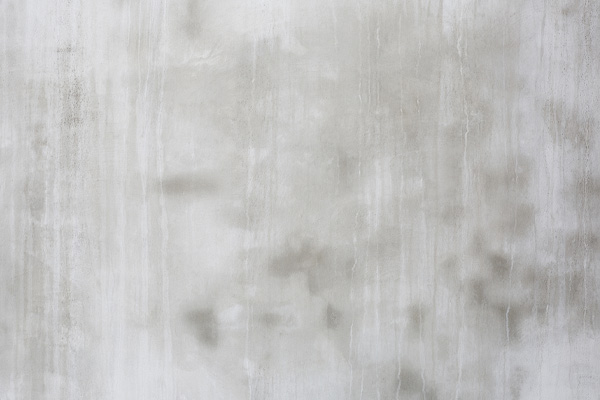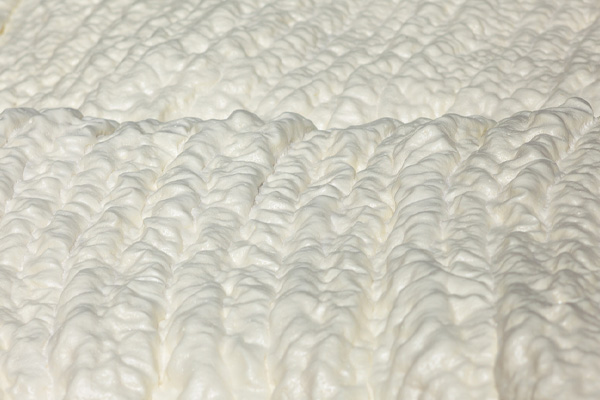Does Spray Foam Insulation Absorb Water?

Flooding is one of the worst things that can happen in a home. Under heavy rain, the roof may leak and create a wet mess in the attic. The crawl space may be even worse with a large volume of standing water. It can happen when you least expect it.
It is a stressful situation for homeowners. Flooding can result in costly repairs due to structural weakness, damaged insulation, and other problems. Some materials hold onto moisture and attract fungi. For example, cellulose and fiberglass insulation can stay wet for a long time. They may create an environment where mold can thrive. Mold growth is detrimental to health and property value.
On the other hand, homes that use open-cell spray foam as their insulation won’t have to worry about getting submerged in a flood. The material can shrug off the water. Some people think that open-cell spray foam absorbs moisture because of its internal structure, yet the opposite is true.
We at Ascend Construction wish to dispel myths and educate homeowners about home insulation. By spreading the facts, we hope that people can make better decisions. In this article, we will discuss what happens when this type of spray foam gets in contact with water. It has more things in common with concrete that you might think. Read on to learn more.
Does Spray Foam Trap Moisture?
Contents
Spray foam insulation can absorb water. It depends on the specific product, so you might want to pay attention to the labels and the reviews. As for our company, we are careful to use spray foam that will only allow water to pass through. The material will not hold on to the moisture, unlike other forms of insulation. Over time, the wet surfaces will begin to dry out.
Let’s focus on what happens to the moisture inside the spray foam for now. Later, we can shift our attention to how the material reverts to dryness.
Concrete & Spray Foam: A Comparison

Consider a house made up of concrete. After it rains, you may see the exterior walls soaking wet. Moisture does not stay on the surface. It finds its way inside the walls because concrete is porous enough to allow it. What seems like a solid wall has tiny air pockets that water can move through and fill up.
However, the rainwater does not make the concrete walls wet forever. You know from experience that the exterior walls slowly dry up once the dark clouds move away and the sun comes back. All signs of moisture will disappear.
As for spray foam, moisture comes and goes in a similar fashion. Just like concrete, open-cell spray foam is also porous, as its name suggests. Its structure allows water to move in and out. Moisture will also evaporate with time. Be patient as you wait for the foam to dry.
How Long Does the Drying Period Last?
Spray foam does not hold moisture for long. It is what separates it from other insulation materials. That said, you would still have to wait for a while for it to dry. The timeframe varies depending on the situation.
How much water got inside the home? If you are only dealing with a small leak, you may be able to get back to normal within a day or two. If the leak is bad, you might be waiting for a week or so. The section of the foam that went underwater may even require a longer period to dry out.
Aside from the amount of water inside the material, you would also have to consider the airflow around the foam. Air can help make evaporation go faster. As it moves, it will carry vapor away from the area.
Related Article: How To Insulate A Wall Without Removing The Drywall
An Example Of How Spray Foam Dries

Let’s visualize a complete drying-out process. It begins with a disastrous flood in Fort Collins. A home that uses open-cell spray foam in its walls went underwater because of heavy rains.
In one room, we let everything proceed with natural ventilation. In another room, we improve air circulation with the help of a small fan. In a third room, we carefully place a fan beside the insulation to pull moisture out of it. These different methods will affect the drying period. With passive ventilation, moisture evaporates slowly. When a fan is blowing towards the foam, it dries up faster. When a fan is pulling moisture from the foam, we get the fastest results.
This experience is only for illustration. None of the conditions are accurate depictions of what happens in homes, but they help us understand how we could hasten the process through airflow.
We also started with completely soaked foam in all three cases, yet the outcome is the same for everyone. The material maintained its structural integrity despite the wetness. It almost seemed like nothing happened once it was dry.
Related Article: What Happens To The Old Insulation In The Walls When Adding Foam Insulation In Fort Collins?
How Airflow, Materials & Spray Foam Affect Drying Times
Through this experiment, it is clear that different strategies will result in a wide range of drying times. Multiple variables affect the outcome. Aside from the airflow, you will also have to consider whether the nearby materials were also submerged. If the spray foam is latching onto wet wood, expect the moisture to stay longer.
Despite the presence of moisture, mold and mildew will not appear on the foam. The material will continue to look freshly sprayed on the wall surface. The foam will not sag or soften up. It will continue to attach itself tightly for a complete air seal.
It is nice to know that you don’t have to replace the open-cell foam even if you experience a catastrophic flood. That is one less worry as a homeowner. Just give it time to expel the moisture through evaporation. The only time when you may have to remove the foam prematurely is if the house sustains structural damage.
Related Article: R-Value vs. Air Seal: What is More Important When Buying New Insulation In Colorado?
How to Deal with Residential Moisture Issues
Nature is beyond your ability to control. Heavy rainfall and flooding will happen even if you don’t want them to. The best that you can do is to improve your home’s readiness to deal with these disasters. Check for roof leaks and have them repaired before the wet season. Once you fix these issues, you can call an expert, like Ascend Construction, for spray foam installation.
Does Spray Foam Absorb Water Colorado?
When it concerns air sealing or upgrading your home’s insulation, consulting with a professional is the best option. However, not all will offer the same quality of service and pricing. Always work with the best one in your area. Residents of Fort Collins and the neighboring area can call Ascend Construction for superior service.
Ascend Construction specializes in insulation removal and installation, air sealing, energy conservation, energy audits, whole-house fan installations, and much more! You can count on us to provide you with service that outshines the rest!

Contact Ascend Construction for a free consultation today. We can provide you with practical solutions to address the problem areas in your Fort Collins home. All of our services are affordable, and our work is guaranteed. Click here to contact us, or click the button below to give Ascend Construction a call. We offer free, no-obligation, in-home consultations.
Ascend Construction
4115 County Road 19
Fort Collins, CO, 80524
(970) 420-5495